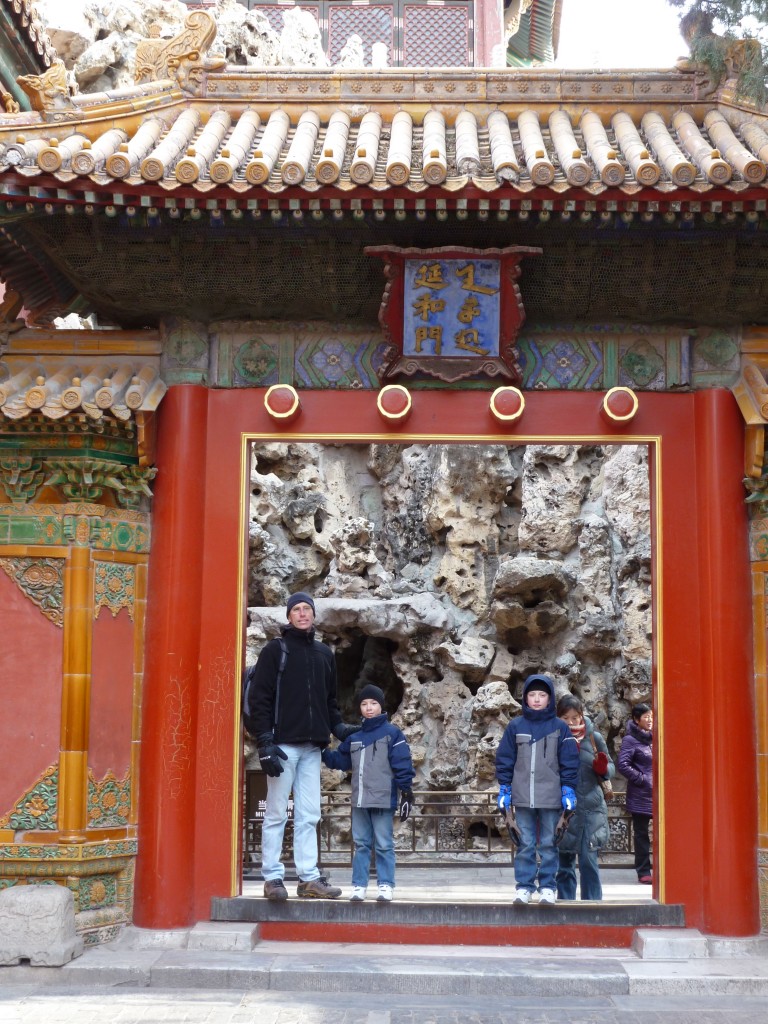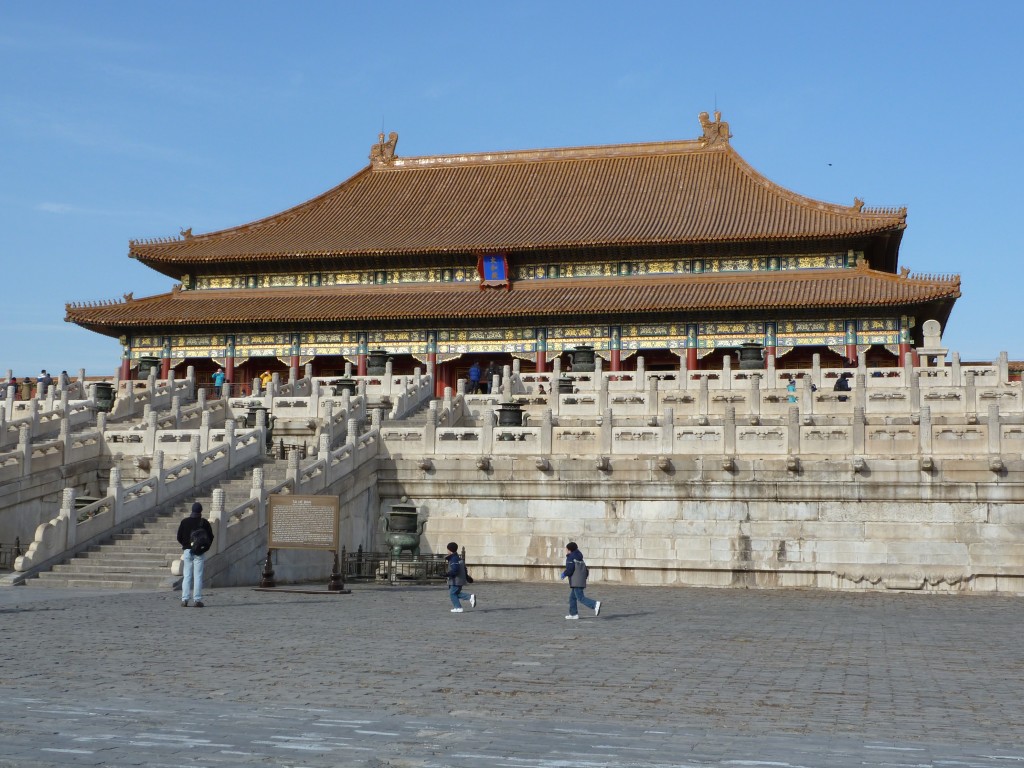We explain the Mongol invasion

“Why did the Mongols invade China?”
“To get out of the cold!”
The day hovered about -5 degrees; lower with windchill coming in from the wintry North and not even slowed down by the Great Wall. If the Mongol hordes had winds like that at their back they were certainly well incentivised to start invading anywhere warmer.
The positive thing about the wintry weather is that we got a crowd-free visit to the Forbidden City today. Some clever advice from a travel forum on the Internet added to the ease of the visit.
We started the day by walking to the North of the Forbidden City and climbing the hill behind the city. There is a Buddhist temple at the top which provides an amazing view over the entire City; it is a great way to start a visit because you get a real sense of the scale of the place, something that is hard to understand when you stand in the midst of it.
The Temple also sits amidst a classic, sculpted Chinese Garden: In the circumstances this may in fact be the original model. We discussed with the boys the fact that Marco Polo had never visited the Forbidden City, it having been built after his visit, but he had almost certainly visited the hilltop we stood on and surveyed the city. I have to admit that I find Marco Polo easier to conect with than the Yongle Emperor or any of his sucessors.
The Northern part of the Forbidden City is sort of the back door and so was completely crowd- and tout-free. It also contains the smaller buildings where the court actually lived and worked on a day-to-day basis. It was here that the last Emperor was internally exiled after being forced to abdicate. While coming from the North is not the traditional approach it does allow you to appreciate the smaller scale buildings before seeing the huge official buildings that surround the South Entrance. Nothing in the city is exactly understated though, so “smaller” is very relative in this context.
The Northern section is beautiful and intricate, filled with old, twisted trees and little gardens. The Southern section has enormous buildings and courtyards – both carefully designed to fill the visitor awe at the overwhelming Imperial power. While it is all very beautiful and jaw-dropping it is also a bit sterile. It is very hard to get any sense of the people who lived and worked there from what you see walking around. I’d read up on the lives of the eunuchs (there were still 1500 living in the City in 1911), mandarins, concubines and soldiers who had lived in the city. So I had some idea of how they’d lived, but they left little human trace of their lives on the enormous edifices.

Regardless, a visit to the Forbidden City can easily take up a day. There are rooms, courtyards, steps, walls everywhere. The place covers hectares and is entirely surrounded by a 30m high wall (apparently built from bricks made largely from rice). We wandered all over the place and I’m sure only saw a small part of what was available. There’s no question that a visit to the City is a great way to get a real sense of the depth and power Chinese culture and history; when it was built 600 years ago most of the things my cultural ancestors were putting together would have fit comfortably into the first courtyard.
I just asked everyone what had stuck in their minds from the day. For Jennifer it was the formal buildings, a combination of their size and the wonderful, intricate detail that appears as you get closer to them. For the boys it was the Buddha on the hill in the morning before we even got to the City.
For me it was the boys making up stories and bad jokes (eg the top of this post) about the City. The Forbidden City needs some good stories to come alive.
When we were in Beijing in 2001, our hutong hotel was very near the northern gate of the Forbidden City as well – but it was an “exit only” gate at that time so we had to walk (2km? further?) round the perimeter to get into the front entrance.